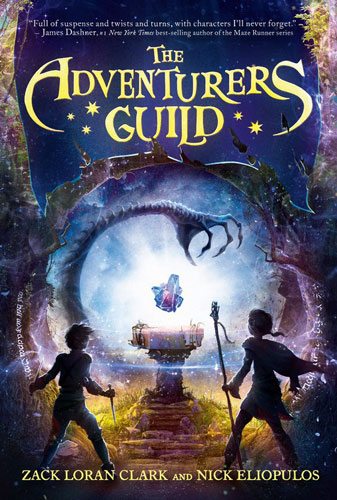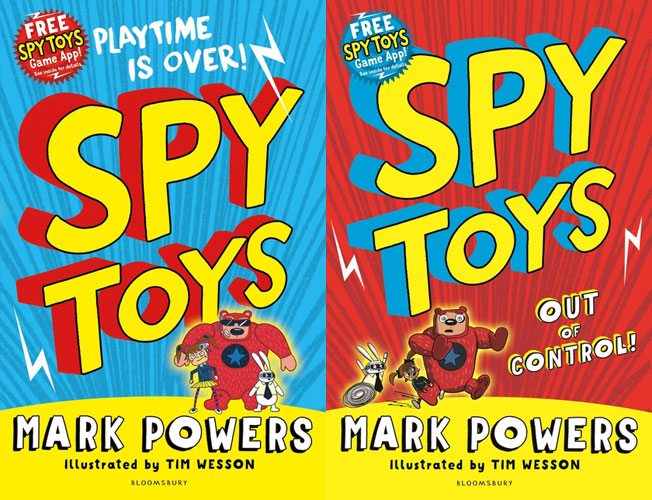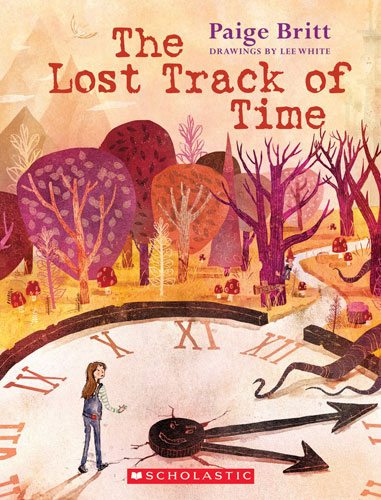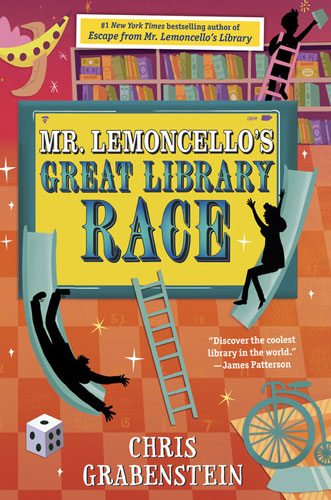It’s been a little while since I’ve had a Stack Overflow column focused on books for middle grade readers—that’s after you’ve moved past simple chapter books, but before you get to Young Adult. One of the things I enjoy the most about middle grade books is that they’re usually really entertaining—whether that’s through humor or excitement or sheer delight in a world. I do enjoy YA books, but a lot of them tend to set in dystopian worlds filled with teenage angst and romance, and I’m not always in the mood for that.
Today’s Stack Overflow is ten books or series for middle grade readers, selected by myself, Kelly Knox, Robin Brooks, and Matt Blum. Happy reading!
The Adventurer’s Guild by Zack Loran Clark and Nick Eliopulos
(Suggested by Kelly Knox)
If you’ve been looking for the right book to ensnare your kids in the imaginative world of high fantasy, The Adventurer’s Guild may be the one to do it. Written by Zack Loran Clark and Nick Eliopulos, this middle grade book is the beginning of a compelling series that takes place in a land ravaged by monsters.
The book switches between the perspectives of two young friends, Zed Kagari and Brock Dunderful, who find their lives taking an incredibly dangerous turn they never expected—but at least they’re together. Joined by two new comrades, the youngest members of The Adventurer’s Guild must face menacing monsters and an even more dangerous conspiracy that threatens everything they love.
The authors are Dungeons & Dragons fans, and it shows; your kids will be itching to go off on their own adventures once the last page is turned. With magic, swords, monsters, and intrigue, The Adventurer’s Guild is the perfect page-turner for preteens.
Spy Toys by Mark Powers
(Suggested by Robin Brooks)
After Spy Kids, why not Spy Toys? Not that these excellent books have anything to do with the movie franchise. A good children’s book needs to entertain from the get-go, and that’s exactly what the Spy Toys books do. They provide the perfect balance of action and humor. Personally, I find too many books are overly-reliant on toilet humor. Yes, it gets children to read, but many books are too one-dimensional and ultimately, put-downable.
Not so Spy Toys. I’ve read these books aloud to my 8-year-old and we’ve both loved them. The premise is that faulty robot toys have been rescued from the reject bin in order to fight crime and evil masterminds. The first book features the kidnapping of the Prime Minister’s son, and the even better follow up, treats us to a crazed super-villain bent on destroying the world.
The Spy Toys books are funny throughout and feature a great use of language, that really inspires children to look out how writing works. I’ve been able to talk to my son about how powerful and evocative words can be, thanks to Mark Powers.
On top of all that, there’s the gentle message that being yourself is far better than conforming. Oh, yes and there’s robot super-toys – what more do you need?
The Legend of Podkin One Ear by Kieran Larwood
(Suggested by Robin Brooks)
Every now and then a book comes along that sparkles. I love children’s stories. I’m predisposed to finding something good in them. I tend to be effusive in my praise for anything that I think will inspire a greater love of reading. This doesn’t always leave me room to really shout about books that I find really special. One such book is The Legend of Podkin One-Ear.
The book is a glorious meld of Watership Down and Redwall. Comparisons between the three are inevitable. The novel is set in a fantasy land, where magic is present. It draws on natural druid-like folklore. It’s a world where good and evil must be kept in balance. There is a hint of a suggestion that this is a post-apocalyptic earth from which humans have long since departed.
The story opens when an old storyteller arrives at a burrow on “Bramblemas Eve.” He tells a story in exchange for hospitality. The story of Podkin One-Ear and his battle against the evil Gorm.
The story is filled with scrapes and acts of heroism, deliberate and accidental. It’s a coming of age story for Podkin, who rises to the challenges set before him. His sister Paz does get a bit of a raw deal. She pretty much keeps her brother alive the entire novel, yet rather fades from the tale at the end. She is deserving of more acclaim.
The druid and aging warrior characters that help Paz and Podkin may be old tropes but they are well rendered and remain fresh for readers young and old. I loved the world-building. The infrastructure of the rabbit world is intriguing and I’d love to see more stories set in “The Five Realms.”
This is children’s storytelling in the grand tradition. Engaging characters, exciting scrapes and a dark and powerful enemy. Finished off with a dusting of magic to bring everything together.
Pirate Blunderbeard by Amy Sparkes and Ben Cort
My middle son (8) is a reluctant reader. Stories, apparently, are boring. He loves comic books and he adores being read to, so stories aren’t the problem, it’s getting him over the hump of decoding the text for himself. I’ve pointed out to him that he really does love stories, and maybe the extra effort of reading them is what is putting him off, but he’s not convinced.
Which is why it was lovely when we picked up Pirate Blunderbeard. Worst Pirate Ever. He devoured the book. He loved the humor in it and its great illustrations by Ben Cort. Like many books aimed at 7-8 year olds the text is broken up and appears in different forms; letters, annotations, and lists, to name but three.
The hapless Pirate Blunderbeard is an inventor, and this aspect really caught my son’s attention. He also loved Blunderbeard’s equally mistake-prone parrot, chicken. There are few things better than your child reading in rapt attention, oblivious to the world, except possibly, seeing them helpless with laughter and guffawing at full volume as they read. Pirate Blunderbeard provided both. On the strength of Worst. Pirate. Ever. we picked up Worst. Holiday Ever. That was consumed in double quick time too. It seems my reluctant reader does not hesitate when Pirate Blunderbeard is involved.
Friday Barnes series by R. A Spratt
(Suggested by Jonathan Liu)
This series about a girl detective is a favorite of both of my older daughters (ages 11 and 13)—they’ve read the first few books countless times already, and there’s always a bit of a debate about who gets to read each book first when it arrives. I finally got around to reading them myself, and I can see why they enjoy them so much.
Friday Barnes is the youngest of five children—her parents and much-older siblings are all theoretical physicists, and she was something of an oversight, which meant that she mostly raised herself. She’s precocious and brilliant, though her social skills leave a bit to be desired, since she has the tendency to speak the truth, no matter how unflattering.
In the first book, she solves a bank robbery and gets a pile of reward money, which she decides to use to send herself to a prestigious boarding school… only to discover that the school is filled with crimes and mysterious happenings. There’s a terrifying yeti, an escaped convict, mysterious holes appearing all around the school, and a visiting Norwegian princess, and that’s just getting started.
Friday’s behavior and intellect are perhaps indicative of somebody with Asperger’s, though it’s never called that explicitly. It makes her a fascinating character, quite like a young Sherlock Holmes, who doesn’t care for most of the things that the rich kids at the school are concerned with. Most of the kids (and, to be fair, most of the staff at the school) don’t care for Friday, but they’ve learned to rely on her when there’s a problem that needs solving. And solve them she does! Each book is filled with lots of mini mysteries, as well as a couple of larger ones, and it’s fun to see which things end up tying together in the end.
Aside from Friday herself, the books are filled with hilarious and ridiculous characters, from the teachers who hate teaching to the cook who loves her microwave oven to Friday’s parents who are even more extreme in their brilliance and social awkwardness than Friday. As somebody who grew up reading Encyclopedia Brown books (and now sees how simple those mysteries usually were), I’m really enjoying this modern take on a kid detective. The books are witty and funny, and I think I’m going to have to join in the debates about who gets to read the next book first.
The books were first published in Australia (where they’re up to Book 7 already), but the American editions are only up to Book 4 so far. I particularly like the illustrations by Phil Gosier in the American editions.
The Lost Track of Time by Paige Britt
(Suggested by Jonathan Liu)
This book is actually an older one, first published two years ago, and I suppose it’s appropriately named since I’m only getting around to telling you about it now. I’d thought from the title that it might fit into one of my time travel–themed Stack Overflow columns, but it turns out it’s not really so much about time travel. It is, however, all about time-related idioms and phrases, and reminds me a bit of The Phantom Tollbooth, one of my personal favorites, though with a different driving force.
Penelope wants to be a writer, but her mother insists that she be productive and schedules every minute of her time. One day, though, she finds a hole in her schedule … and falls in, finding herself in the Realm of Possibility, which is under threat from Chronos and his army of Clockworkers. Like The Phantom Tollbooth, this book is filled with idioms made literal: the Range of Possibilities is a mountain range; following a hunch is chasing after a shy little creature; worry warts appear on your face when you’re worried. And, of course, there are all sorts of time-based puns.
The big difference here is that Milo in The Phantom Tollbooth suffered mostly from boredom and needed to be shown the wonders in learning new things; Penelope suffers from being overscheduled and not having any time at all to daydream. I think that probably speaks to a shift in what childhood is like from the 1960s to now. It reminds me also of the theme of the framing story for the animated version of The Little Prince—another young girl whose life is completely scheduled by her mother, with no room for flights of fancy. Whether your kids need a little nudge to daydream or not, this book is a fun (and funny) exploration of the Realm of Possibility.
Mr. Lemoncello’s Great Library Race by Chris Grabenstein
(Suggested by Jonathan Liu)
Mr. Lemoncello is back in the third book in this series—he’s the Willy Wonka of libraries and board games, a wacky inventor who has given his hometown library a huge technological upgrade. In this book, he is introducing a new holographic technology called the Nonfictionator, which can take any historical figure and bring them to life so that you can converse with them. And to celebrate, he has—of course—created a new game, sending kids racing around the world to find fascinating facts about real people.
But not everyone is fond of Mr. Lemoncello’s vision of the future. In this book, we meet the Krinkle Brothers, Lemoncello’s primary competitors in the board game business. Some evidence turns up that suggests that Lemoncello stole his first game idea—can Kyle Keeley prove his innocence, or is his hero really a fraud?
I’ve enjoyed the Lemoncello series, even though I’ve complained before (about the first and second books) that the games themselves, as described in the books, sound kind of lame to me. The other thing I noticed this time around is that Kyle, the “hero” of the book, is the only one of the competitors who’s not academically gifted in some way. He just loves playing games and winning, but he’s not all that interested in research, “science junk,” or books (unless they’re about Mr. Lemoncello)—but this is our protagonist. I suppose it could be because the books are written to catch the attention of kids who may be more reluctant readers, to show them how fun the world of books can be.
The Mouse and His Child by Russell Hoban, illustrated by David Small
(Suggested by Jonathan Liu)
It’s the 50th anniversary of The Mouse and His Child, and there’s a new paperback edition out. The story is about a wind-up toy, a mouse and his child, attached at the hands so that they can dance and the father mouse can swing the child up in the air. After an idyllic period at the toy store, where the child dreams of living in the dollhouse with various other toys as family, they’re purchased as a Christmas gift and boxed up … and eventually discarded when the clockwork stops working.
But then what follows is an amazing adventure story, as the mouse and his child encounter various animals, friendly and hostile. What’s interesting is that, although they have sentience in the story and talk to each other, they are unable to move themselves, and are completely reliant on others to repair them and wind them up. I wrote more about the book for GeekDad back in 2010, in case you want a more in-depth look.
The new paperback edition also includes an excerpt of an unfinished sequel focusing on the villainous Manny Rat. Mostly it will just make you wish that Hoban had finished this second story, because I really loved the world of The Mouse and His Child and would love to spend more time exploring it.
The Secret Keepers by Trenton Lee Stewart
(Suggested by Matt Blum)
Author Trenton Lee Stewart follows up his excellent Mysterious Benedict Society series with The Secret Keepers. True to form, Reuben, the book’s protagonist, is a seemingly-ordinary boy who finds ingenuity he never knew he had. The story centers around 11-year-old Reuben as he discovers a spherical watch that can turn him invisible, and then discovers there are some nefarious people looking for it. As with the Mysterious Benedict Society books, Stewart does a great job mixing humor, clever characters, and tense situations into something most kids will love.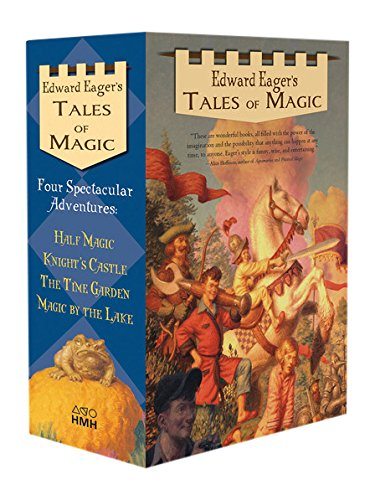
Tales of Magic Boxed Set by Edward Eager
(Suggested by Matt Blum)
Edward Eager’s delightful series of books were originally published in the 1950s, in the wake of C.S. Lewis’ Narnia series. They, too, are about kids finding magic in unexpected places, though Eager’s have neither the huge fantasy world nor the thinly-veiled Christian allegory of Lewis’. Eager’s magic series (not all of which share characters, it should be noted) is rife with magical twists – for example, in Half Magic, a group of siblings find a coin that grants magic wishes, but only half of whatever is asked for. I can say from personal experience that they make excellent books to read aloud as a family, as they’re fun for both kids and adults. I still find it curious that so few of the people I know – myself included – never read the books when we were kids; but there’s no time like the present to remedy that situation.
Disclosure: We received review copies or advance copies of some of these titles.

